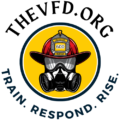Most workplaces require you to prioritize safety by implementing effective personal protective equipment (PPE) protocols. By understanding the importance of proper PPE use, you can significantly reduce the risk of workplace injuries and ensure a safer environment for you and your team. This guide will walk you through imperative steps—ranging from identifying your specific PPE needs to establishing training programs—that will enhance your safety measures and compliance with regulations. Stay focused on elevating safety in your workplace by adopting these effective strategies.
Understanding PPE
While personal protective equipment (PPE) is vital for workplace safety, it is important to understand its role in protecting employees from various hazards. PPE encompasses a wide range of gear designed to shield your body from specific risks, ensuring you maintain a safe working environment. By implementing appropriate PPE protocols, you can minimize the risk of injuries and enhance overall safety standards in your organization.
Importance of PPE in Safety
The significance of PPE in safety cannot be overstated, as it acts as your first line of defense against workplace hazards. By wearing the appropriate PPE, you safeguard yourself from potential injuries, illnesses, or even fatal accidents. This investment in safety not only protects your well-being but also contributes to a culture of care and responsibility within your organization.
Types of PPE Available
The range of PPE available to you is extensive, designed to protect various parts of your body across different work environments. Some common types include:
- Head protection (helmets, hard hats)
- Eye and face protection (goggles, faceshields)
- Hand protection (gloves, finger guards)
- Foot protection (safety boots, shoe covers)
- Body protection (lab coats, coveralls)
Knowing the types of PPE available ensures you select the right equipment for your specific needs.
| PPE Type | Use Cases |
| Head Protection | Construction, overhead work |
| Eye Protection | Chemical handling, welding |
| Hand Protection | Assembly work, chemical exposure |
| Foot Protection | Industrial settings, heavy machinery |
| Body Protection | Laboratory, hazardous environments |
With the right understanding of the types of PPE available, you can better equip yourself to face the challenges of your occupational environment. It is vital to assess the specific risks associated with your role and select the appropriate PPE accordingly. This proactive approach will help you mitigate hazards and create a safer workplace. Typical categories of PPE include:
- Fall protection (harnesses, lifelines)
- Respiratory protection (masks, respirators)
- Hearing protection (earplugs, earmuffs)
- High-visibility clothing (vests, jackets)
- Skin protection (barrier creams, protective suits)
Knowing the full range of PPE at your disposal empowers you to safeguard your health effectively while performing your duties.
How to Assess Workplace Risks
Some workplaces are inherently more dangerous than others, which makes assessing risks necessary for maintaining safety. Start by conducting thorough evaluations of your work environment to identify potential hazards, employee exposure, and the impact these risks could have on health and safety. Regular assessments and observations can help you anticipate issues before they escalate, ensuring safety protocols effectively mitigate potential hazards.
Identifying Hazards
If you want to create a safer workplace, begin by identifying hazards that employees may face in their daily routines. Walk through the environment and take note of equipment, materials, and processes that could cause harm. Engaging your workforce for their insights can further enhance your hazard identification efforts, as they are often most aware of the risks they encounter.
Evaluating Risk Levels
Risk levels are assigned by determining the likelihood of a hazard causing harm along with the severity of the potential consequences. This assessment helps you prioritize safety measures effectively, focusing on the most significant risks first. By understanding the various risk levels, you can allocate resources and implement appropriate PPE protocols tailored to your specific needs.
Levels of risk should be categorized into high, medium, and low, facilitating clear decision-making. For example, high-risk situations require immediate attention and comprehensive PPE solutions, while low-risk cases may only call for standard safety gear. Regularly reviewing these levels allows you to adapt to changes in the workplace and ensure your protocols remain effective as new risks emerge.
How to Select Appropriate PPE
Even with the best safety protocols, improper Personal Protective Equipment (PPE) selection can undermine your safety efforts. To ensure effectiveness, consider the specific hazards you’re facing and assess your tasks. Taking the time to choose the right PPE can make a significant difference in protecting yourself and your team.
Factors to Consider
For selecting the right PPE, you should evaluate several factors, including:
- Type of hazard (chemical, biological, physical, etc.)
- Duration of exposure
- Fit and comfort
- Compatibility with other equipment
- Standards and regulations
Knowing these factors will empower you to select PPE that aligns well with your workplace needs.
Matching PPE to Risks
If you want your safety protocols to work effectively, it’s crucial to match your PPE to the risks present in your work environment. This alignment ensures that you are adequately protected against specific hazards.
The selection process should involve a thorough risk assessment where you identify potential threats in your workspace. Evaluating these risks allows you to determine the crucial PPE requirements. An effective approach involves gathering insights from safety data sheets, consulting safety experts, and staying updated with industry standards. This way, you assuredly choose PPE that offers optimal protection while maintaining comfort and usability.
How to Implement PPE Protocols
All organizations must take a structured approach to implement effective PPE protocols. Start by assessing the specific needs of your workplace and the hazards present. Develop a comprehensive plan that outlines PPE requirements, maintenance protocols, and monitoring processes to ensure compliance. Engaging employees in the development phase fosters a culture of safety that extends beyond mere mandates.
Developing Guidelines
Developing clear guidelines is imperative for effective PPE implementation. You should create a detailed document that specifies which types of PPE are required for specific tasks, along with instructions for proper usage, maintenance, and storage. Regularly review these guidelines to adapt to any changes in regulations or workplace hazards.
Training Employees
For successful PPE implementation, providing comprehensive training to your employees is vital. Make sure they understand not just how to use the equipment, but also why it is imperative for their safety. Training should cover proper fitting, maintenance, and the specific dangers associated with their tasks.
Another important aspect of training is ensuring employees are comfortable asking questions and voicing concerns regarding their PPE. Encourage open dialogue during training sessions, and consider conducting hands-on demonstrations to familiarize your team with the equipment. This proactive approach not only enhances compliance but also empowers employees, instilling confidence in their ability to protect themselves effectively in the workplace.
How to Ensure Compliance
Once again, you should prioritize compliance with PPE protocols by establishing clear expectations and consequences for non-compliance. Ensure that team members understand the importance of PPE in maintaining safety in your workplace. Regular training sessions and open communication channels will help to foster a culture of safety, encouraging everyone to adhere to the protocols effectively.
Monitoring Usage
Ensure consistent monitoring of PPE usage to guarantee that all employees are following the established protocols. This can be achieved through on-site observations, regular check-ins, and encouraging employees to report any issues related to PPE. A proactive approach to monitoring strengthens accountability and maintains safety standards.
Regular Audits
Clearly, conducting regular audits of your PPE protocols is important for maintaining compliance and safety. These audits should evaluate not just the availability of PPE but also its proper use and condition. By examining your practices, you can identify gaps and implement necessary changes to enhance overall safety.
This process allows you to assess the effectiveness of your PPE protocols and make informed decisions about improvements. During the audits, seek feedback from employees on their experiences with PPE to pinpoint any difficulties they may face. This collaborative approach not only ensures compliance but also empowers your team to take an active role in maintaining workplace safety. By regularly reassessing your protocols, you create an environment that values safety and encourages continuous improvement.
Tips for Maintaining PPE
After establishing your PPE protocols, effective maintenance is key to maximizing safety. Ensure you commit to the following tips:
- Regularly clean your PPE based on manufacturer guidelines.
- Store equipment in a dry and designated area.
- Document maintenance routines and schedules.
- Train staff on proper handling and care of PPE.
- Replace PPE as needed based on usage and damage inspection.
This will help prolong the lifespan of your gear and enhance overall safety compliance.
Cleaning and Storage
Any PPE you utilize must be properly cleaned and stored to ensure its effectiveness. Follow the manufacturer’s cleaning instructions closely to prevent any degradation of materials. Designate a specific storage area that is clean, dry, and accessible for quick retrieval when you need to use it. Avoid placing your PPE in common storage areas where it can get contaminated or damaged.
Inspecting for Damage
If you want to ensure your PPE remains effective, consistently inspect it for any signs of damage. This includes checking for tears, cracks, and other wear that could compromise its function. Regular evaluations are important to maintaining a reliable safety standard while you work.
The importance of inspecting your PPE cannot be overstated. Frequent assessments will help you identify any issues early on, allowing for timely repairs or replacements. By maintaining vigilance, you enhance not only your own safety but also that of your colleagues. Develop a routine inspection schedule to ensure you do not overlook any components, as even minor damage can lead to significant risks in hazardous environments.
Conclusion
From above, it’s clear that implementing effective PPE protocols is important for safeguarding your workforce and enhancing overall safety standards. By assessing risks, choosing appropriate equipment, providing comprehensive training, and fostering a culture of safety, you empower your team to prioritize their well-being. Regularly reviewing and updating your PPE practices will ensure ongoing protection and compliance. Invest in your safety protocol today, and you’ll create a more secure and productive work environment for everyone.



